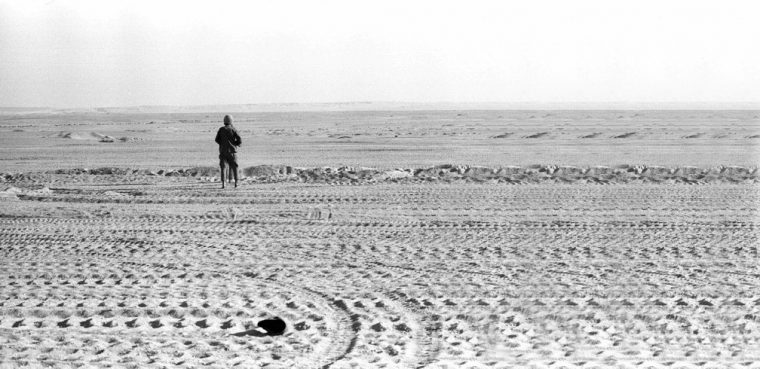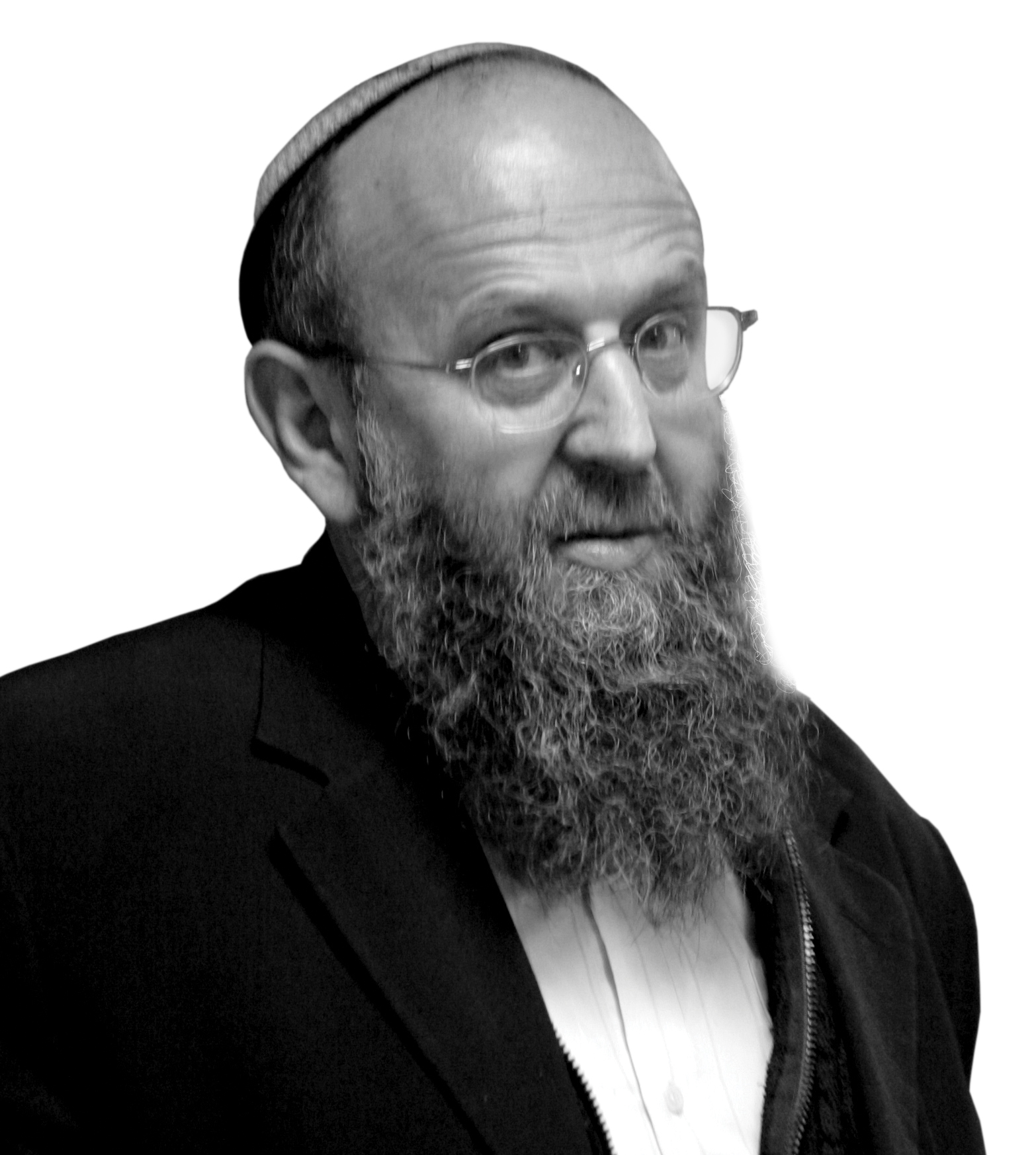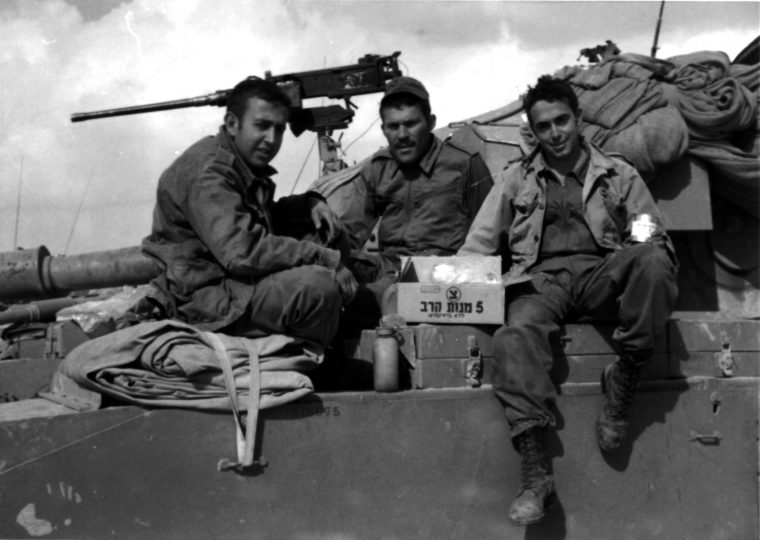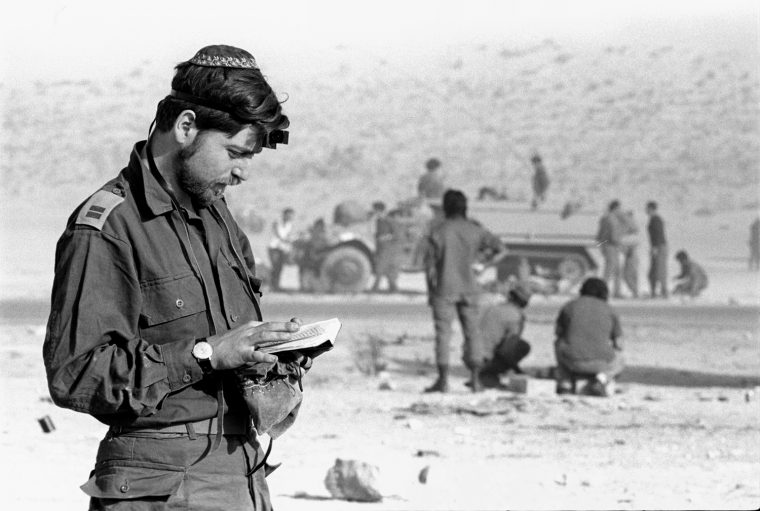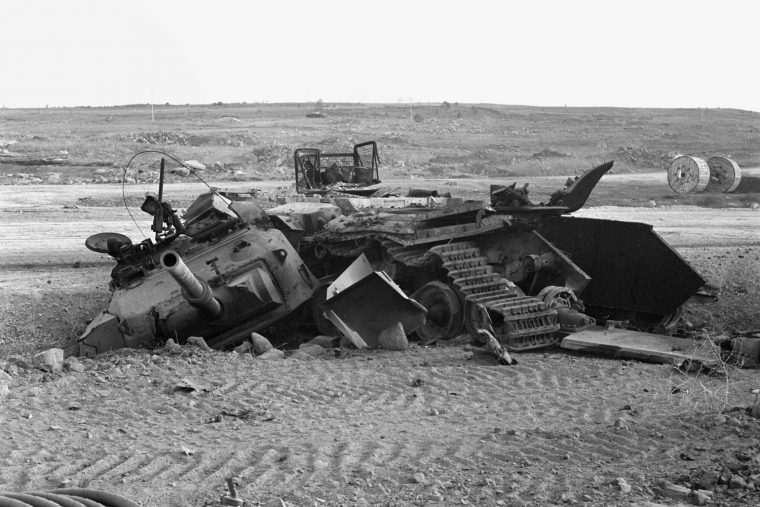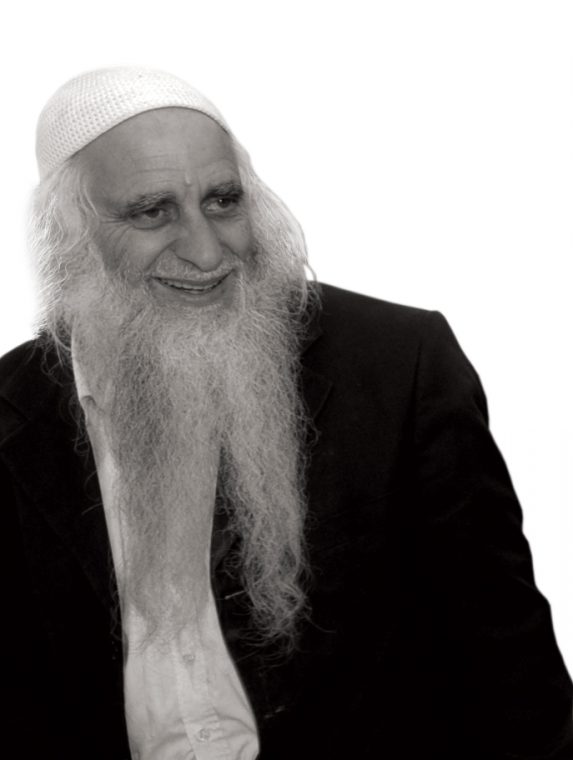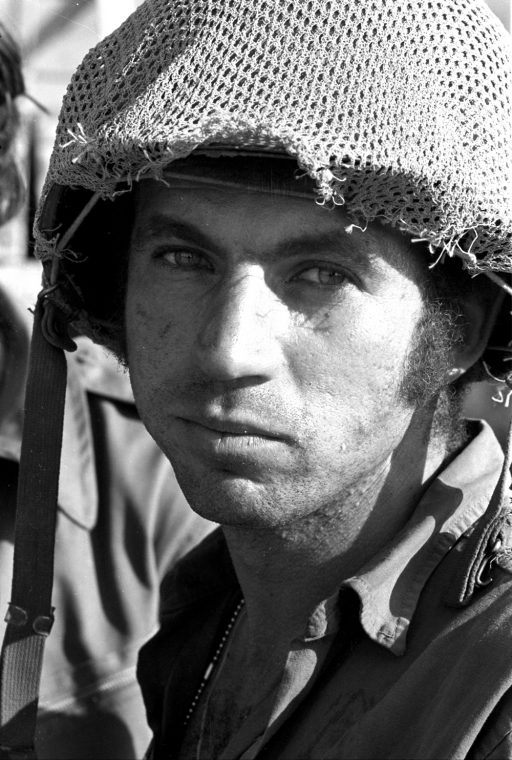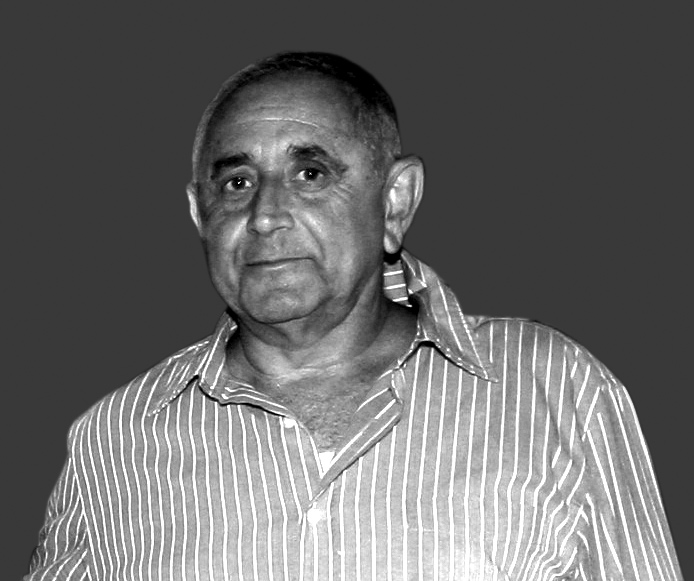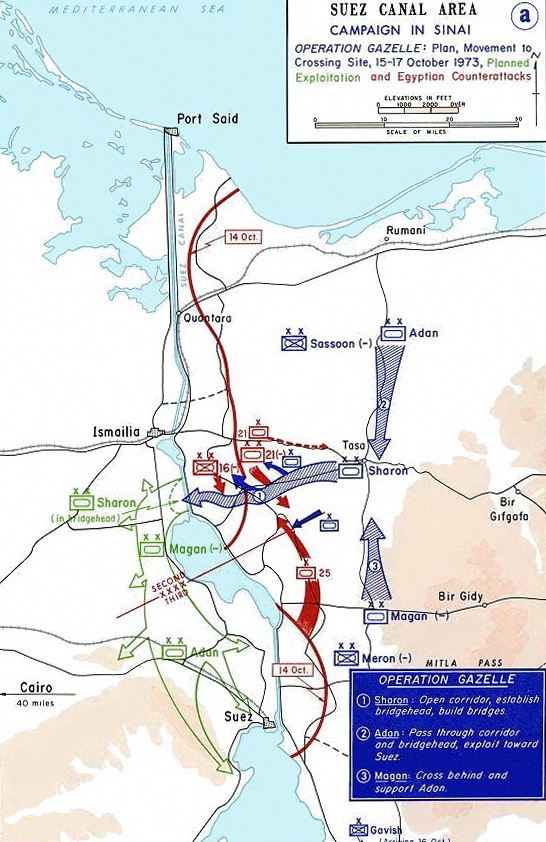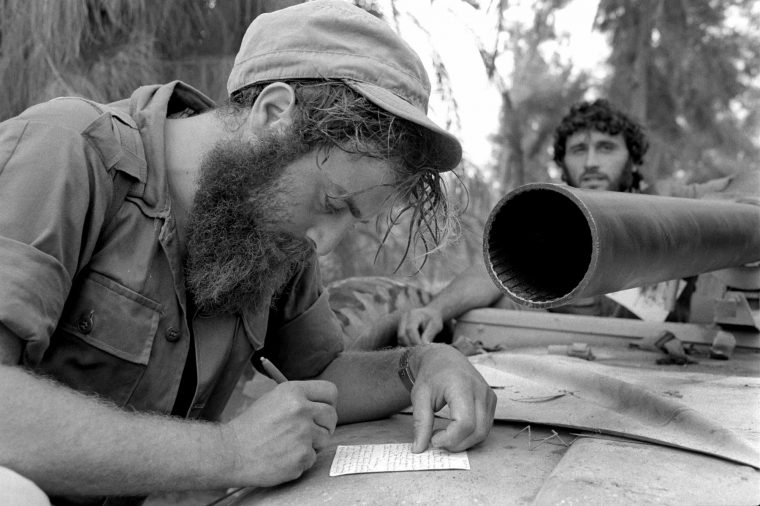Three Soldiers
The first was in the armored corps. His tank took a direct hit, and he alone survived, burnt from head to toe. In the long months he lay in a hospital bed, he came to a new understanding of suffering and faith. The second was from the Nahal pioneer infantry unit. Atop reconquered Mount Hermon, he discovered his best friend had been killed. The resulting religious and political questions gnawed at him to his dying day. The third was a paratrooper. Crawling under fire to evacuate the wounded, he emerged somehow with his belief in his fellow man not just intact, but strengthened.
On Yom Kippur, October 6, 1973, a Syrian and Egyptian attack on Israel’s northern and southern borders caught the country unawares. As reserves were pulled out of synagogues and bused straight to the front lines, Israel struggled to block the advancing enemy. For the first time since the end of the War of Independence in 1949, Israeli־held positions were conquered and held – the Syrians recovered the strategic outposts on Mount Hermon, and the Egyptians crossed the Suez Canal and moved rapidly across the Sinai Desert. Heavy Israeli casualties in the first days of fighting caused widespread demoralization, as did the evacuation of entire communities on the Golan Heights.
It took four days in the north and over a week of bloody combat in the south before Israeli forces managed to turn the tables and launch an offensive. Eighteen days after the war began, a cease־fire was declared. Israel had recovered all the positions it had lost, had advanced on the Egyptian front to within a hundred kilometers of Cairo, and was in firing range of Damascus in the north.
Despite Israel’s victory and its Arab aggressors’ humiliation, the Yom Kippur War is remembered as the Jewish state’s first defeat, the first crack in the myth of its invincibility. For the three soldiers we are about to meet, the war raised questions that shaped the rest of their lives.
“God Lies in Broken Hearts”
Rabbi Shimon Gershon Rosenberg (known by the acronym Shagar) was an outstanding educator with a unique outlook. He died of cancer six years ago, leaving behind a philosophical legacy that boldly confronts the tensions of a postmodern world.
During the Yom Kippur War, Rabbi Shagar drove a tank in the battle of Nafakh, in which a vastly outnumbered Israeli battalion held back the Syrian advance at a crucial crossroads in the Golan Heights. He had married only six months earlier.
“He was called up as Yom Kippur ended and was sent up to the Golan Heights the very next day. His forces were ambushed very early in the war,” his widow, Miriam, told me in her Alon Shvut home. “He rarely spoke of it. His tank took a direct hit. He lost consciousness and awoke to find the tank filled with smoke. He was badly burned but managed to extricate himself only seconds before the tank went up in flames reaching several stories into the sky. There was no way of evacuating the wounded. Two of his former classmates, Shmuel Orlan and Yeshayahu Holtz, were left behind. The thought that he might have saved them always haunted him.”
Forever young. Shimon Gershon Rosenberg (left) on his tank with close friends Yeshayahu Holtz (far right) and Shmuel Orlan, who were killed in the war
Rabbi Yaakov Medan, cohead of Har Etzion Yeshiva, also fought in that battle. In a documentary about Shagar, Medan recalls those horrifying moments: “Syrian tanks had ambushed them at the turn in the road. We could only pray. All I had was my gun. Moving on, we came across the wounded from the first tanks. The Syrians took aim at us but missed. Suddenly, I recognized Rabbi Shagar. He was in terrible shape. His face was completely scorched; he was shell־shocked and badly wounded. You could see death in his eyes.”
Medan pulled Shagar into his tank and took him to the battalion’s medical station. From there he was transferred to Rambam Hospital in Haifa, where he was treated for several months. “Subconsciously, he remained convinced that other members of his tank crew had somehow survived,” recalls Mrs. Rosenberg. “But after he’d been in the hospital two weeks, someone from the military rabbinate arrived with items found in what was left of the burnt tank. He asked [Shagar] to identify them.”
Rabbi Shagar attended his comrades’ memorial services every year – on the day after Yom Kippur – even after their parents had passed away. “He was always very agitated that day,” she adds.
In a eulogy for one of his students who was killed in the First Lebanon War (1982–5), Rabbi Shagar remarked:
Life is beautiful, and never more so than when death confronts us – the love people share, friendship, children, even just a deep breath of fresh air under blue skies. The grass next to the burning tank is green, ever so green. And there, right beside these fearsome sights, the Divine life and breath is right there. And the man who has survived the fire ponders how. And then he is gripped by a burning desire to kneel before the Divine right there in that awful place and cry out to the heavens: For what? And why? And saddest of all – why do we think to ask only when war overpowers us? Why does man find the way to his Creator only through suffering? (Rabbi Shimon Gershon Rosenberg – Shagar, I Seek Your Face [5768], p. 214 [Hebrew])
Questions without Answers
Rabbi Shagar discussed the concept of faith at a conference marking thirty years since the death of his friend Yeshayahu Holtz:
For me, war doesn’t mean just pain; it’s a shadow, an absence of God’s presence. It provokes questions. Faith doesn’t mean sweeping doubts under the rug. It means questions – the kind Rebbe Nahman of Breslav calls questions with no answer. God lies in broken hearts. That’s where His presence is strongest. The sense of shattered faith is the deepest possible expression of God’s presence.
Summing up his approach in a few words, he added: “In fact, in some upside־down way, suffering and the attendant sense of injustice can result in the deepest faith.”
Ten years after the war, in a talk with yeshiva students serving in the army, Rabbi Shagar called for a different type of faith:
Have we really learned what we were supposed to learn from that war? My faith is not always straightforward. There are shadows; there are doubts. … A great big question mark exists here, and people haven’t really dealt with it, haven’t really grasped the answer to the shadow hanging over faith. Belief of this sort isn’t weakened – in fact, if anything, the shadow hanging over it makes it stronger. … It’s not a matter of victory; I don’t think there’s any kind of victory here. It’s a question of fighting on. And I mean fighting on spiritually – fighting to believe. (Da’at website)
Rabbi Elhanan Nir teaches at Siach Yitzhak, the yeshiva founded by Rabbi Shagar in Efrat. According to Nir, the trauma of the Yom Kippur War shaped Shagar’s neo־Hasidic philosophy.
“I once asked Rabbi Shagar why people were so critical of his yeshiva and its teachings. He looked at me, then said, glancing down at his fingers that had been burned in the war:
“‘I was wounded in one of the first battles in the Yom Kippur War, and spent months lying bandaged in the hospital. While I lay there in a full־body cast, I realized that the Torah too was bandaged, concealed within endless layers. I understood that the Torah, like myself, must be freed of its constraints and bandages. That’s what I teach. I try to free the Torah of its bandages and let the light shine on it.’
“That was what Rabbi Shagar stood for. Through pain and suffering he found a new light. The trauma distilled his religious outlook to an unusual level of precision and candor. The trauma never left him. While he was sick [with cancer], he spoke of it repeatedly – how he came back to the tank; his friends Shmuel Orlan and Yeshayahu Holtz, who were killed there; and how from then on everything he did was affected by that.”
Never stop asking
Rabbi Menahem Froman was the rabbi of the Judean settlement of Tekoa until he too succumbed to cancer in 2013. An unconventionally outspoken leader among religious Zionists, Rabbi Froman was also a poet and a political maverick.
When I interviewed him two years ago, he was already quite sick. He lay on the couch in his home, covered with a blanket. Speech was difficult; the words came very slowly, with long pauses.
When the Yom Kippur War broke out, Rabbi Froman was called up with the reserves and assigned to a paratrooper unit. He helped capture Mount Hermon on October 21, the last day of the war. “My battalion shelled the enemy from below, then climbed the mountain with the other paratroopers. We didn’t have to fire at all on the way up – the infantry and paratrooper brigades that preceded us had done all the work. We reached the top and found a glorious, snow־covered landscape spreading before us. Dozens of dead Syrian soldiers were scattered on the battlefield.
“A paratrooper asked if I was from Kfar Hasidim. When I answered in the affirmative, he told me that his commander, an outstanding officer from Kfar Hasidim, had been killed in battle in the Golan Heights. He had run straight into the Syrian bunker near Botamia Junction, diverting all the Syrian fire in his direction. The paratrooper spared me no details. He didn’t know the officer was my closest friend, Yossi Yonai. I went into shock and they sent me home. Later I named my oldest son after Yossi.”
Two political groups were founded after the war – the secular, left־wing Peace Now, and Gush Emunim, the right־wing settlement movement. Both, in Rabbi Froman’s opinion, were motivated by the Jewish concept of repentance – responding to tragedy by rethinking, re־evaluating one’s life and priorities.
“The war destroyed Israel’s sense of power. It forced people, religious or otherwise, to return to their roots, to try to understand what meant most to them. Most of the religious Zionist sector chose the land of Israel, with its historic center in Judea and Samaria. The secular community decided its most deep־seated ideal was peace in the Middle East.
“Yom Kippur is Judaism’s most fundamental day. Its defining moment was when the goat was thrown off a cliff to Azazel. But Azazel is the enemy, the dark side. Why give him a gift? Because Yom Kippur is not about good and bad, it’s beyond that. It’s the source of everything.
“This is my prayer for the current crisis – that we use it to find a profound ideal we all share. Whether you choose land or peace as your ideal, the deepest thing of all is unity, solidarity, love – between the divided camps. What Rabbi Kook called ‘all־encompassing unity.’
“When eight students were killed in the terrorist attack at Mercaz Harav Yeshiva [in 2008], I contacted the Student Union in Jerusalem and suggested a joint meeting of university and yeshiva students. It was mobbed. After the songs and speakers, I stood up and said we must bring the political left and right together. We stood together, yeshiva students and college students alike, and cried, “There is no God! There is no God!’ It wasn’t an act of heresy. Rebbe Nahman himself suggested an alternative to the Shema Yisrael prayer. Instead of ‘Hear, O Israel: the Lord our God, the Lord is One,’ he suggested the verse ‘Where does His glory dwell?’ Cry out, ‘Where is God?’
“Becoming religious is a wonderful thing, but questioning your faith is often much more powerful.Never stop asking.”
Stronger than Before
At sixty־nine, Brigadier General (res.) Yehuda Duvdevani looks younger than his years. His eyes are a clear blue, his words clipped and organized with military precision. After the Yom Kippur War, he was decorated for his role in the controversial battle of the Chinese Farm, a strategic crossroads near the Suez Canal, where he braved heavy enemy fire to bring wounded soldiers to safety.
Military opinion is divided as to whether the battle was a grave blunder. The offensive aimed to make way for a bridgehead enabling troops to cross the Suez Canal near the Great Bitter Lake. Yet superior Egyptian forces occupied the area, and Israeli tank battalions had already crossed the canal elsewhere and were advancing along its west bank. The battle raged for four days, October 15–18, and although the target was captured, Israel lost close to two hundred men.
Relaxing in shorts on his living room couch, Duvdevani didn’t look traumatized by war. Quite the contrary, as I soon learned. As far as he was concerned, some people came out of the conflict stronger than they went in.
I asked what faith meant for him. He smiled slightly and launched into a monologue.
“My story starts a while before the Yom Kippur War. My father came to Palestine from Poland in 1928. He was a platoon leader in the Seventh Division in the War of Independence. Ben־Gurion was determined to save Jerusalem, and my father’s unit was designated to attack the heavily fortified hill of Latrun. As my father spoke Russian, Polish, and Yiddish, he was in charge of the illegal immigrants who had just been smuggled in from concentration camps in Europe and sent straight to the front lines. After five days of training, my father led them into battle.
“They encountered heavy artillery fire, many were killed or injured, and they beat a confused retreat. My father was hit while evacuating the wounded, and a young man named Mondak carried him on his back four kilometers to Kibbutz Harel, where they were surrounded by the Jordanian Arab Legion. There was no water, no ammunition, and it was hot as hell. Mondak was exhausted, and my father told him to gather all the wounded and then save himself. Mondak refused, until my father put a gun to the fellow’s head. Then he left them behind.
“Today we know that there was a short battle with the Arab Legion, but none of [the Jews] survived. My father’s actions were an unwritten will: commanders go first and don’t leave their wounded behind on the battlefield. His legacy to me was his love for his country and his people.
“My father’s body was never recovered, and for fifty years he was considered missing in action. A monument was erected in his memory at the military cemetery on Mount Herzl.
“After joining the army, I went through a number of crises. After a mission, I would visit the memorial and talk to my father, seeking strength.
Searching for Something
“In the Yom Kippur War, I was sent to the Chinese Farm straight from advanced officers’ training, as a major in the 890th Paratrooper Regiment. We began moving down the Tartur road to clear it of enemy antitank squads, but we soon encountered much heavier fire than expected. Company commanders were killed, and I ran to replace one of them. Massive artillery fire was all around me; I kept ducking, then getting up and going on.
“I reached the company and ordered the soldiers to evacuate the wounded lying between us and the Egyptians. No one moved. They weren’t prepared to step out into such danger. I went out; that was my father’s doing. I crawled toward the shouts of the wounded. I found them about sixty meters from enemy lines and crawled another hundred meters with three wounded soldiers on a stretcher. The Egyptian soldiers saw a dark stain moving on the white sand and opened fire. I have no idea how I did it – normally I couldn’t even drag one soldier by his belt. Strength just came from somewhere. I got back to our lines and said, ‘Now start taking orders! The Egyptians have attacked and they’ve been blocked, and I have lots of wounded!’
Image of Operation Gazelle (also known as Operation Abiray-Lev or Operation Stouthearted Men) during the Yom Kippur War. Modified to show only the Israeli plan for the operation.
“We spent the whole night evacuating casualties, under continuous artillery fire. At dawn Ehud Barak appeared with tanks. They were hit by missiles and started burning, and we had to jump from tank to tank and get the soldiers out. We received orders to retreat, and I provided cover fire for the company going into the canal. I was running all over the place on my own, pulling out injured men, constantly exposed to missiles and short־range barrages.
“I reached the canal and saw men in shock, their eyes bloodshot after a night of terror. The battalion regrouped, and we were told to go back to attack the Chinese Farm. My company of a hundred men was down to about thirty; we had no idea who was alive or dead – and we had to ready the 890th Paratrooper Regiment for battle! There was no time for thinking or arguments. It took everything we had.
“After the battle of the Chinese Farm, we found ourselves in Egypt, opposite Ismailia, surrounding the Third Egyptian Army. As I tried to reconstruct what had happened, I saw people around me – even those who weren’t religious – searching for something to hold on to, something beyond themselves. Some talked to God, some spoke of faith. Everyone – secular kibbutzniks, left־wing activists – was groping for something greater, something that would shelter and sustain them, someone to pray to, to give them the strength to go on.
“But I felt a bit different. It was as if I had finally lived up to my father’s standard. Left alone, I had rescued the wounded. I felt complete, felt he was looking down at me and giving me confidence that I was doing things right; that he was taking care of me. I had many talks with my father – he gave me the strength to keep going. In that sense, you might say the war actually strengthened my faith, my convictions. I felt that now I could continue where he had left off, that I was the natural continuation of the immigrants who’d gone straight to war.
“I noticed that the war was easier for those who had something to believe in. Having someone to cry out and pray to made it easier to stay grounded amid incredible tension and pressure. You would see someone stepping aside to say the afternoon prayer and everyone else suddenly joining in. Why? They needed the strength. With all those casualties, with death all around, people felt they needed to pray. I saw the most unexpected cases of religious revival.
“In the Bible you see how Nahshon had to take a leap of faith before jumping into the waves of the Red Sea. Joshua conquered Jericho just by walking around it, by the strength of his faith. For the battle of Emmaus, against superior Hellenist forces, Judah Maccabee chose his men for their spiritual fortitude. For me, that’s the most vital thing.”
Duvdevani finished his story, his eyes red: “My father’s body was finally identified in the grave of an unknown soldier in the Nahalat Yitzhak cemetery in Tel Aviv. Despite municipal objections, I moved his remains to Mount Herzl, to his memorial stone. Fifty years to the day after he fell at Latrun, at the very hour he died, we buried him on Mount Herzl, overlooking the unknown soldiers’ plot. I removed his monument from that plot and laid it over his grave.”

